Autumn Time: Delicious Autumn Dishes Around The World For You to Try
1. Mooncake, Vietnam
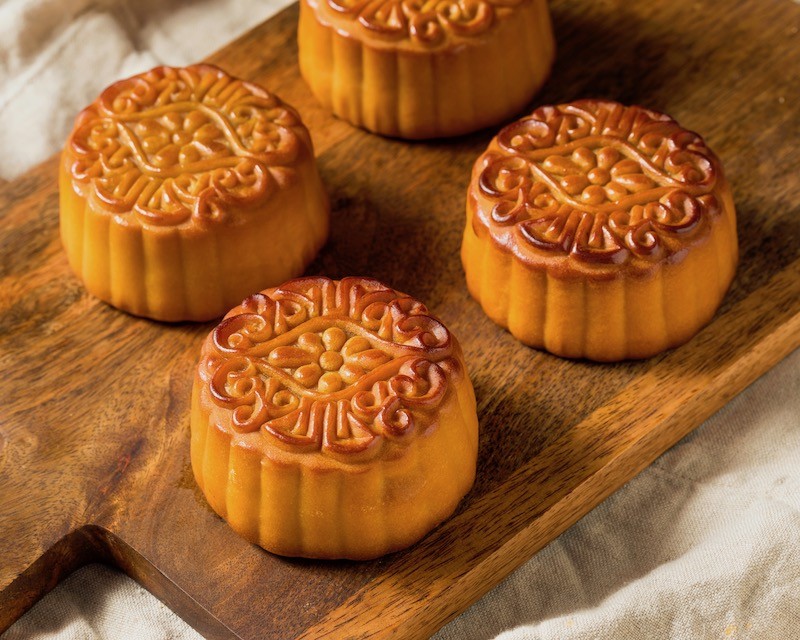 |
| Photo: Bake From Scratch |
Before your first taste of Vietnamese mooncakes, you might be curious how they became part of our mid-autumn festivities. The word ‘mooncake’ first appeared during the reign of China’s Song Dynasty, from 1127 - 1279. By the Ming Dynasty period, mooncakes were a regular feature of the harvest moon festival. Though nobody knows exactly when mooncakes first came to Vietnam, over hundreds of years Vietnamese food has often been influenced by Chinese traditions.
In Vietnam, Trung Thu (Mid- Autumn Festival) was seen as a special time for reunion and harmony. Once a year, after a fruitful harvest, families and relatives would gather to relax, sing songs and drink tea under the light of the full moon. Children would look forward to staying up late, carrying star lanterns in the dark, and listening for the drums of lion dancers. Square mooncakes representing the earth and round mooncakes representing the sky were the perfect treat on this magical night.
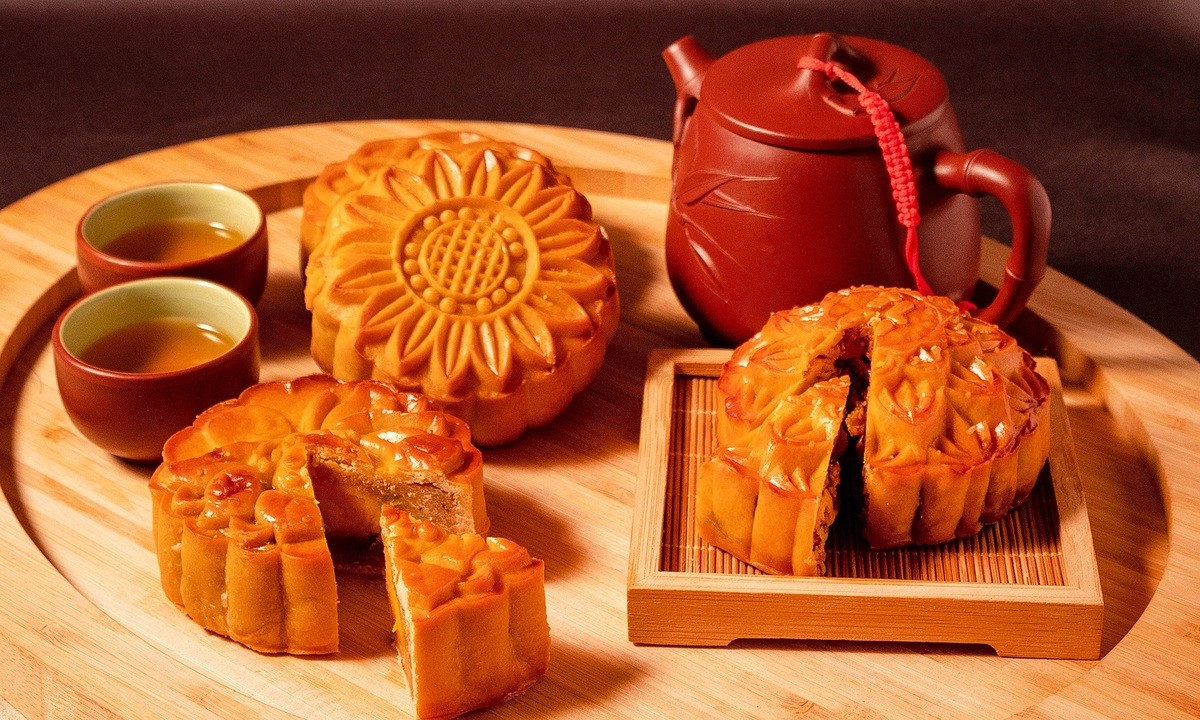 |
| Photo: Getty Images |
Long ago there were only two types of mooncakes in Vietnam. Savoury mixed paste mooncakes were made of up to 10 ingredients, including lime leaves, smoked sausage, lotus seeds and a secret sauce or wine. Mixed paste mooncakes would be made in square moulds and baked in the oven. These cakes would be offered on family altars and shared at home. The round mung bean mooncakes were made with sticky rice flour to be eaten fresh. They can be offered in Buddhist pagodas or eaten at home.
These days, you’ll have many more than two mooncake flavours to choose from. Traditional bakeries normally use ingredients such as lotus seed, coconut meat, black sesame, nuts and young rice to make large mooncakes for everyone to share. More adventurous bakers offer pistachio, coffee, chocolate, jelly, strawberry and even durian mooncakes to their patrons.
2. Gejang, Korea
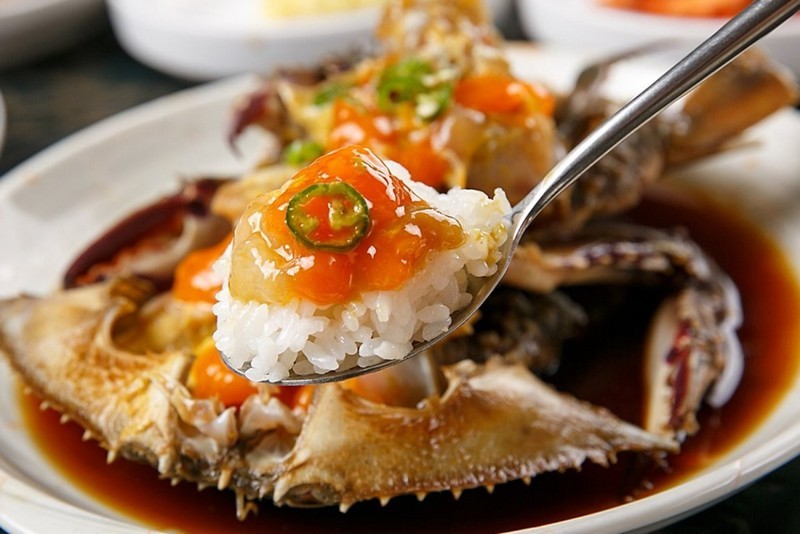 |
| Photo: Wanderlust Tips |
Gejang(게장) or gejeot(게젓) is a variety of jeotgal, salted fermented seafood in Korean cuisine, which is made by marinating fresh raw crabs either in ganjang (soy sauce) or in a sauce based on chili pepper powder. The term consists of the two words; ge, meaning "a crab", and jang which means "condiment" in Korean. Although gejang originally referred only to crabs marinated in soy sauce, it has begun to be called "ganjang gejang" these days to differentiate it from yangnyeom-gejang (양념게장). The latter is a relatively new dish that emerged since the restaurant industry began to thrive in South Korea. "Yangnyeom" literally means "seasoning" or "seasoned" in Korean but refers to the spicy sauce made with chili pepper powder.
Gyeongsang, Jeolla, and Jeju Island are famous for their own characteristic gejang. It is a representative speciality of Yeosu in South Jeolla Province, and a traditional Jeolla cuisine dish.
According to a poll of tourists to Korea, gejang is difficult to eat because the dish is too hot and salty.
According to Korean traditional medicine, crab has a cold nature that could cool one's body temperature, so gejang is believed to be good for driving away the spring fever. Although gejang was originally made with freshwater crabs in general, such crabs are becoming scarce, so the gejang made with kkotge (horse crab) caught in the Yellow Sea (West Sea), the west side of Korean peninsula, has become prevalent. Among gejang made with freshwater crabs, chamgejang of North Gyeongsang Province, which can be preserved and eaten after one year passes and beotteok gejang, which can be eaten immediately after preparation, are the most famous.
3. Shinmai, Japan
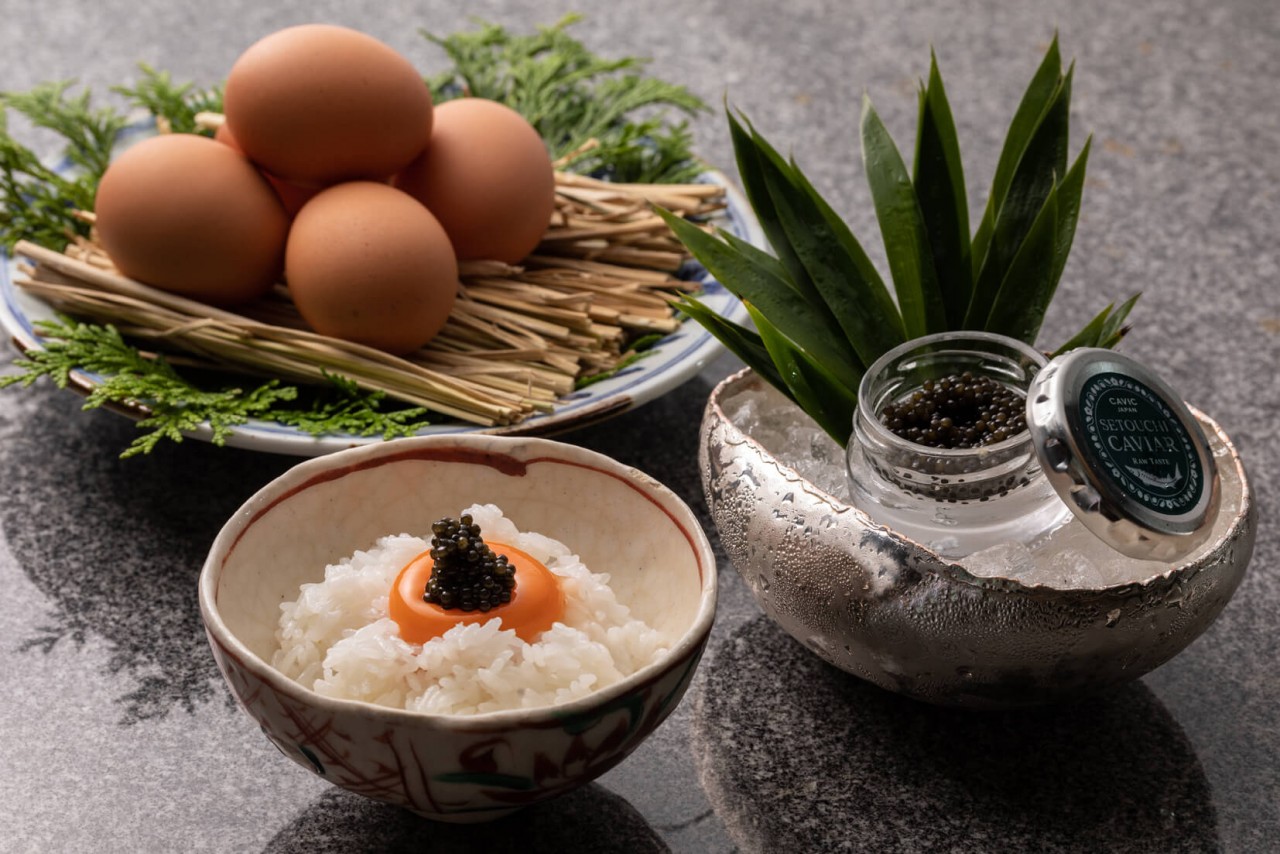 |
| Photo: Moshi Moshi Nippon |
Driving through Japan in September and October, you’ll find the landscape a patchwork of golden rice fields, the rice plants dripping with panicles of plump, fawn-colored grains. Their tendrils sway and light green leaves flutter in the breeze; their ripeness fills the air with a sweet, straw-like smell and a sense of anticipation: harvest season for farmers, shinmai (‘shin’ meaning new, ‘mai‘ meaning rice) season for consumers.
Cereals are a staple in just about every food culture on earth: the maize of Mexico, wheat of Australia, teff of Ethiopia. For Japan, like many Asian countries, it’s rice. In Japan, rice cultivation dates back to the Yayoi Period (300 BC to 250 AD), the time the grain came across from China. So integral is rice to Japanese cuisine that the foundation of a meal – ichiju sansai (one soup, three side dishes) doesn’t even mention it – it’s tacitly implied. Words for ‘meal’ – ‘gohan‘ and ‘meshi’, are also words for rice.
Shinmai is called so to distinguish it from rice harvested the previous season, as there are characteristic differences: new rice is more sticky, white, and glossy, with 3-20% more water content. To cook, it requires less water; when eating, it’s more plump, moist, and aromatic. Eating shinmai is a treasured and celebrated time in the calendar.
4. Apple Cider Donuts
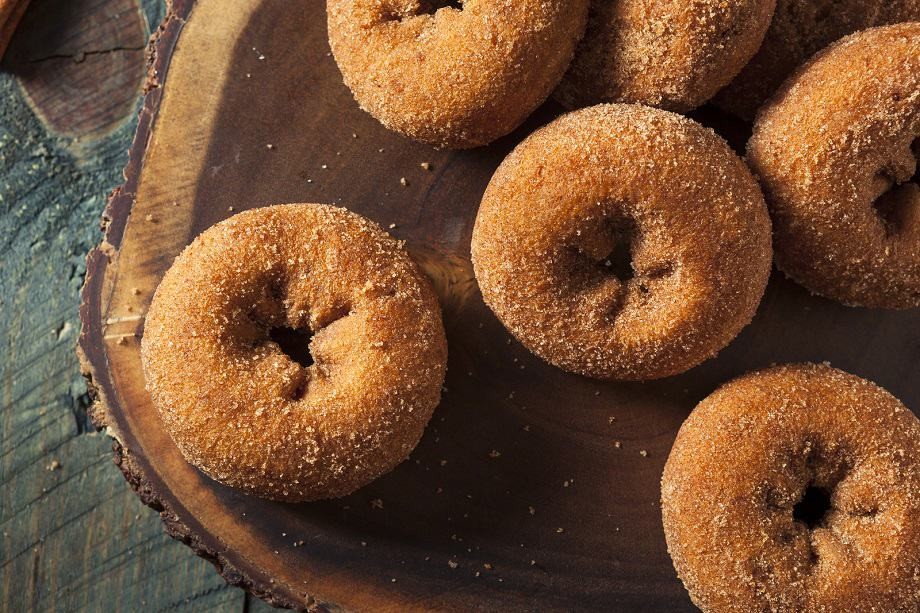 |
| Photo: Cider Culture |
Homemade apple cider donuts are cakey, dense, and intensely flavored. Baked, not fried, these fall treats come together quickly and easily – a convenient recipe with no mixer required. The trick for big flavor is to use concentrated apple cider. Make the morning less hectic by reducing the apple cider the night before.
Texture: If you like cakey, moist, and dense donuts with a crumbly cinnamon-sugar coating, then look no further than this recipe.
Flavor: Flavor-wise, they’re APPLE and CINNAMON and SPICE all over. They taste like they’re straight from the bakery!
Ease: A simple mix of wet and dry ingredients plus the apple cider concentrate makes these a snap to prepare for crisp fall mornings. No mixer, rolling pin, or donut cutter required! Simply add the batter to a donut pan– I use and love this one. If you only have 1 pan, just bake a batch at a time.
Time: In less than an hour, you’ll have an entire plate stacked high with homemade apple cider donuts.
5. Chiles en nogada, Mexico
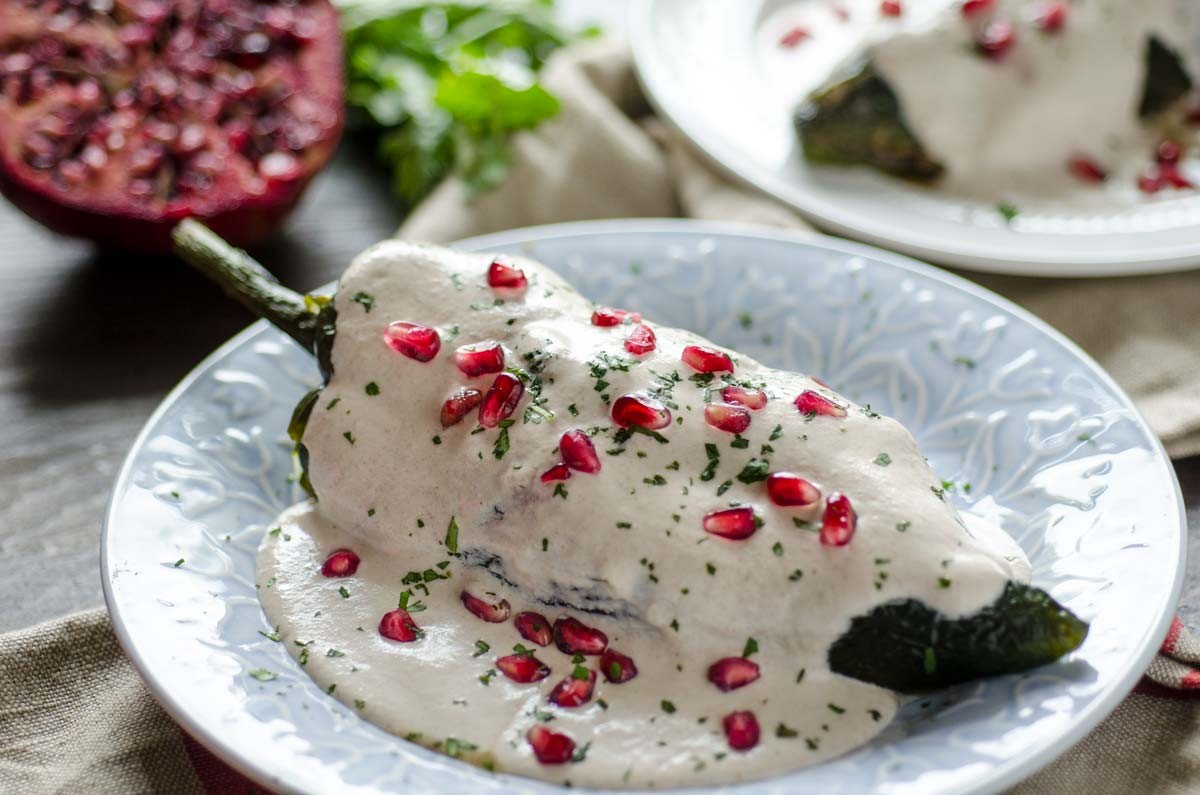 |
| Photo: Dora's Table |
Chiles en nogada is a Mexican dish of poblano chiles stuffed with picadillo (a mixture usually containing shredded meat, aromatics, fruits and spices) topped with a walnut-based cream sauce, called nogada, pomegranate seeds and parsley, and it is typically served at room temperature.
The picadillo usually contains panochera apple (manzana panochera), sweet-milk pear (pera de leche) and criollo peach (durazno criollo). The cream sauce usually has milk, double cream, fresh cheese, sherry and walnut. The walnuts, which give the nogada sauce its name (nogal being Spanish for "walnut tree") are traditionally of the cultivar nogal de Castilla (Castilian walnut). In some cases, pecans may substitute for or supplement the walnuts.
The traditional season for making and eating this dish in Central Mexico is August and first half of September, when pomegranates appear in the markets of the region and the national independence festivities begin. The coloration of the dish—green chile, white sauce, red pomegranate—further the patriotic associations, as these are the main colors of the flag of Mexico.
6. Mushroom, Russia
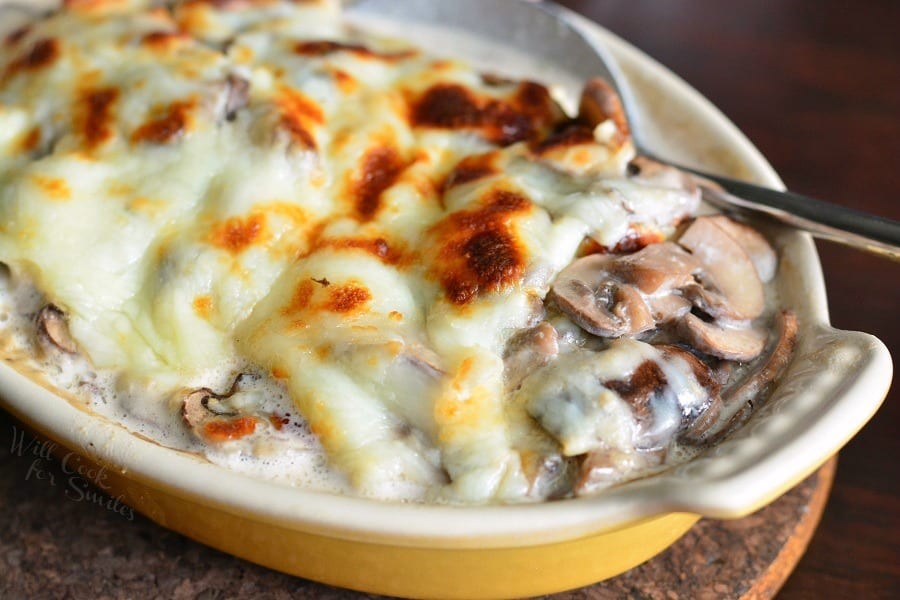 |
| Photo: Will Cook For Smiles |
Mushroom is one of favorite food in all season. In autumn, people collect mushroom in large quantities and different varieties. Dishes in autumn are made of mushroom. Mushroom may cook the mushroom by stewed and fried. They also add the mushroom into the soup, pies and pancakes. Mushroom is also cooked to store in winter season by pickled and dried.
Creamy Russian Mushroom Julienne: The best mushroom side dish you will even have! Thinly sliced mushrooms and shallots sauteed and then baked in cream sauce and cheese. This simple side dish will be your family’s favorite after one bite. This is one of traditional Russian dishes that you will find in every restaurant as well as every home. Actually, it’s a Russian dish with a heavy French influence since it’s cooked in a cream sauce. There is actually quite a bit of French influence in Russian cuisine and I love it. I’m a big fan of cream sauces and wine sauces so French cooking is one of my favorite. (Aside from Italian, of course.)
7. German cream of pumpkin soup (KÜRBISCREMESUPPE)
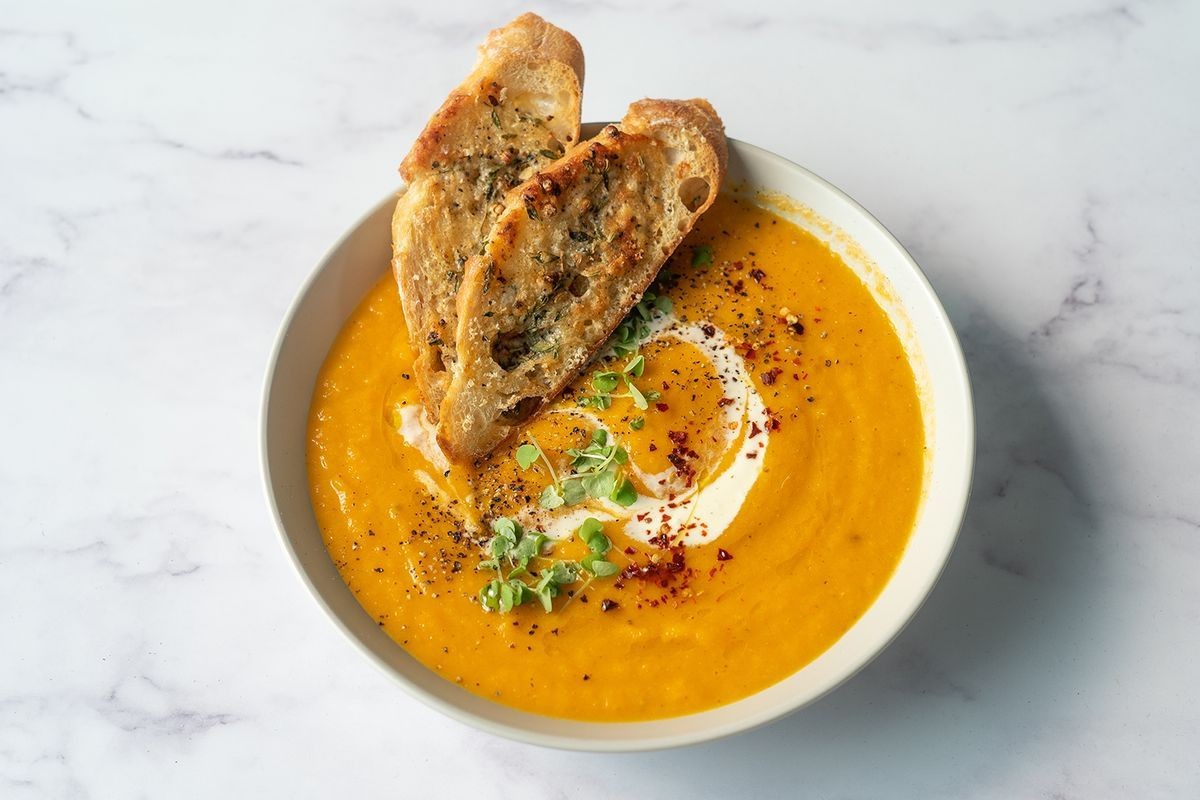 |
| Photo: Getty Images |
Cream of pumpkin soup, or pumpkin anything, is probably not something that comes to mind when you’re thinking about traditional German food. However, pumpkins have become a very popular part of fall in Germany. When we were there last year we saw different varieties of pumpkins for sale on road sides, folks growing small varieties in their gardens and used as part of fall decor. There’s also that huge pumpkin festival over in Ludwigsburg. It feels like it’s becoming part of new traditions with seasonal foods from homemade pumpkin jams (seriously, pumpkin apple and pumpkin coconut jam are awesome) to pumpkin soups available as an appetizer at this time of year in most restaurants.
For any pumpkin (or pumpkin spice) haters out there, don’t worry, it’s not quite like it is here where pumpkin and pumpkin spice flavoured everything hits the stores in September.
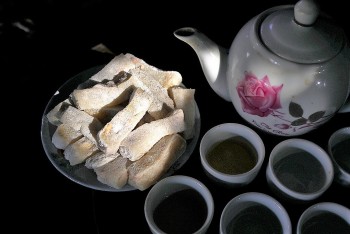 | A Northern Delicacy Easily Mistaken as A Drink Che lam can be mistaken for a sweet soup served with ice or a drink from green tea (che). It is in fact a traditional ... |
 | Delicious and Well-known Dishes Named After Famous People From pizza Margherita to beef Wellington, here is some of the most famous dishes that were named after a real person, along with their interesting ... |
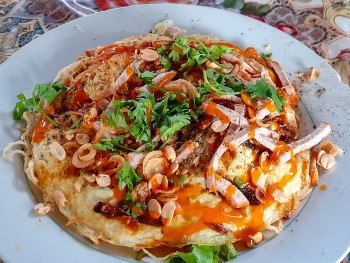 | Unique Pizza from Hu tieu Noodles in Can Tho Coming to Can Tho, tourists can taste unique pizza made from hu tieu, a type of noodles, and even learn how to make colorful hu ... |
Recommended
 World
World
US, China Conclude Trade Talks with Positive Outcome
 World
World
Nifty, Sensex jumped more than 2% in opening as India-Pakistan tensions ease
 World
World
Easing of US-China Tariffs: Markets React Positively, Experts Remain Cautious
 World
World
India strikes back at terrorists with Operation Sindoor
Popular article
 World
World
India sending Holy Relics of Lord Buddha to Vietnam a special gesture, has generated tremendous spiritual faith: Kiren Rijiju
 World
World
Why the India-US Sonobuoy Co-Production Agreement Matters
 World
World
Vietnam’s 50-year Reunification Celebration Garners Argentine Press’s Attention
 World
World










